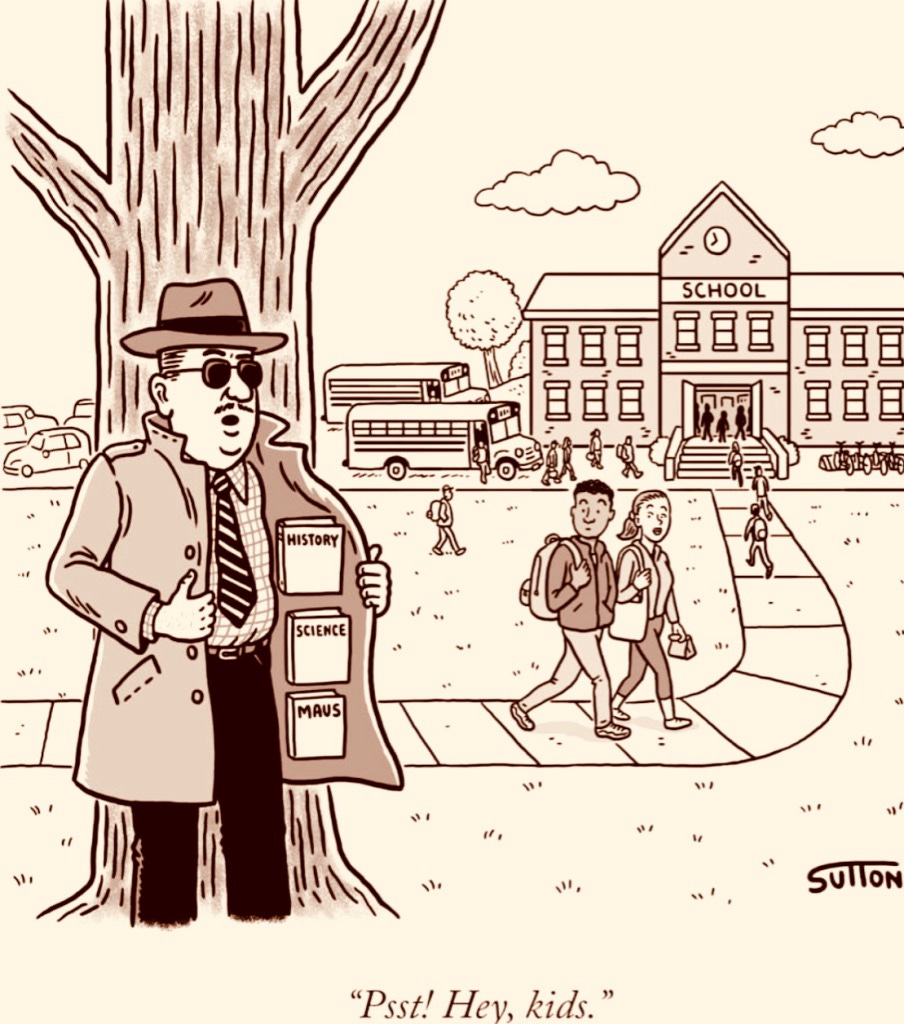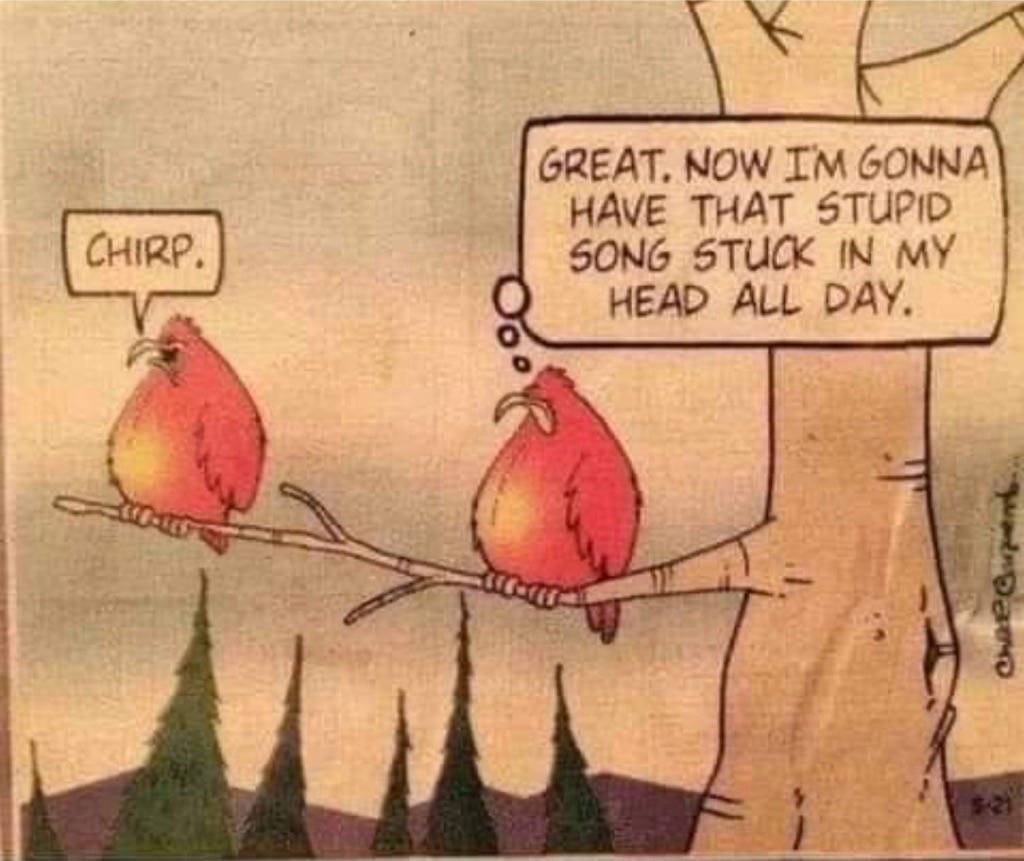News Notebook Sunday 2.6.22
Flash-points, A Dashboard View... and Living in Colour and Conversation
Sunday-morning greetings from newShrink, and welcome to February! This week’s arrival of a hopeful new lunar Year of the Tiger and Black History Month converged with daunting news of widening states’ restrictions of educational curricula, threats against historically black colleges and universities, bans and even official calls for burning of books and creative work — all alarms for the entire realm of ideas.
From the standpoint of depth psychology and soul in democracy it is an intersection of intense and contrasting themes that have had me, well, fired-up…
There are flames…

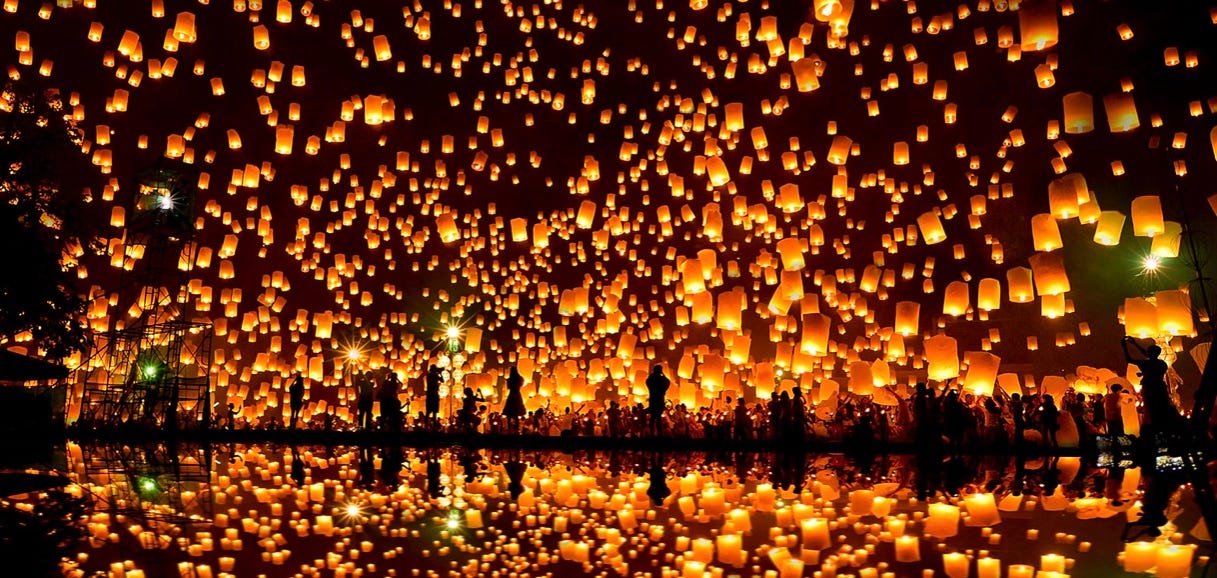
For my friend, reader and long-ago high-school classmate Myra Clontz Lau, her Chinese-American husband, K.P., and their family in the Northern Virginia/suburban DC area, the Chinese New Year and such traditions as the Lantern Festival are a time to celebrate cleansing-release of the past and hope for good fortune ahead. Myra says K.P. remembers it as a time to go and clean-up one’s ancestors’ gravesites, a time of reverence for the ancestors.
“The eating of dumplings goes way back, the dumpling usually stuffed with meat as a luxury of sorts that symbolizes good fortune since the dumpling shape is like a gold ingot. We just made 300 of them the other day and shared with friends and family… K.P. makes the filling, and we wrap till we can’t wrap any more! We have done that for almost 50 years now!”
🌀
And then, flames of another sort…
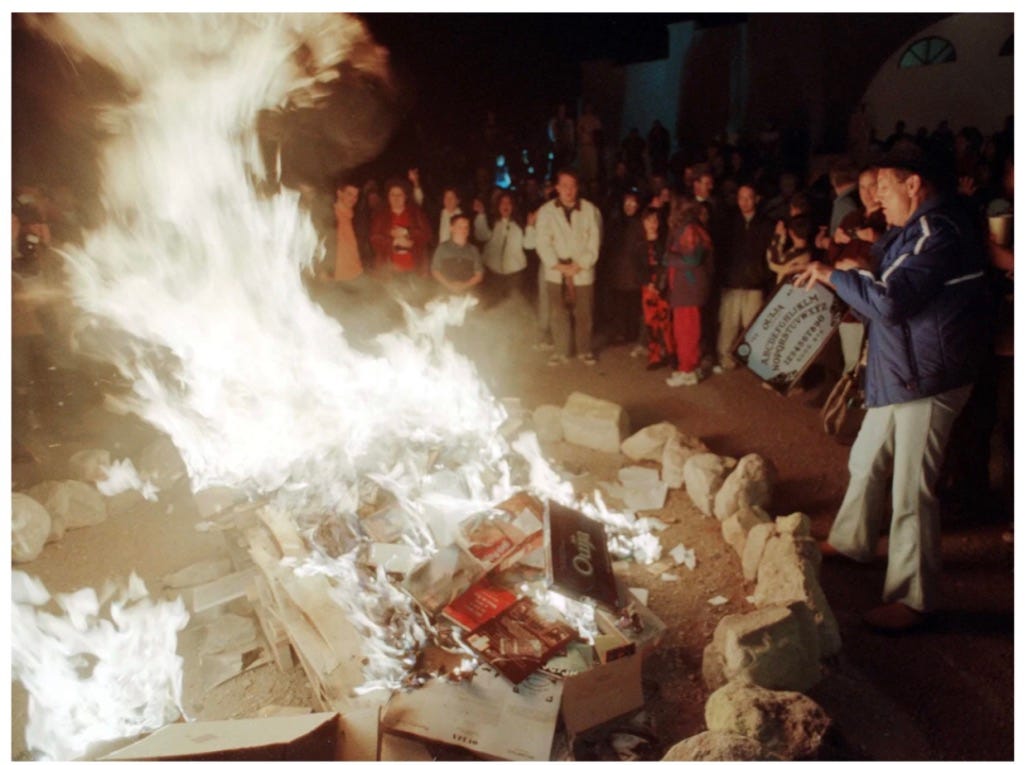

🔵
Perspectives, from the historic…
to the comic…
🔵
And the power of living images, the visual…
… and the voiced, in words whether written or spoken…
connecting themes
The first two of the three sets of visual images above seemed fairly straightforward. The third pair evolved more slowly through the week, right up through writing time.
🔷 The top, “flaming,” pictures depict contrasting positive vs negative, shadow vs light, symbolic “flash-points” to watch for in the week’s calendar and news.
🔷In the second pair the visual presents factual Black history in the United States in a graphic I’ve found unique and useful as reminder to adjust events over time accurately “to scale.” And the cartoon satire highlights-by-hyperbole the current controversies regarding what history or many other issues and ideas are even read, taught or spoken-of.
🔷In the third pair of images, themes suggested by the art piece I have titled Colours of Complexity, from 5-year-old granddaughter Ms. E’s current portfolio, had first shown up early in the week and continued to develop through writing time.
🔷The result of a unique method and medium of inks splashed with alcohol to create batches of little alchemical surprises, the finished piece is a study in contrasts: vivid color anchored by strong, shiny black ink… fades to near-watercolor effect… thickly textured high gloss against flattest matte finish.
🔷 For several reasons the Colours piece, delivered last weekend without my yet having focused conversation with the young artist, drew me immediately — even though her other gift-art-pieces are also lovely. (These are pictured at the end of today’s post.)
🔷 First I went for my run soon after seeing the art-work. Immediately, and nagging ever since, the week’s ear-worm in my head with mental image of the picture has been “Colour My World,” the 1981 song by Chicago. (The song’s correct spelling, plus further use of the word’s spelling in today’s edition, is in the spirit of including the diverse range of Canadian, British and other readers here for whom this spelling is the correct one!)
🔷 On holding the Colour piece, an early observation was: Even as five-year-olds, the way we see, feel, experience and understand our world, ourselves and one another is not one dimensional, or externally dictated. Rather, it is solidly, boldly defined in black-and-white and richly, vividly coloured… and faintly fadingly watery… and thickly textured with shine… and flat with dull matte finish. (etc.)
🔷 The Miz E. Colour picture reminded me of the quote I had just saved from an NPR interview with BBC author and podcaster Jon Ronson:
“People are complicated. Good people do stupid things and vice-versa. We're complicated with gray areas, we're a mess. And I think that's a very positive way of telling stories to remember that human beings are a complicated mess.” (Riffing on a famous line of poetry by William Butler Yeats that reads, "Things fall apart; the center cannot hold," Ronson has released a new BBC podcast called "Things Fell Apart.")
🔷What took longer to figure out for relevance to themes here were the repeated re-surfacings this week of the quote in the final image above. It’s one I hadn’t even remembered saving, from depth psychologist James Hillman. Hillman is among my short list of favorite gifted-edgy curmudgeons, whose teaching I was fortunate to experience in person at Pacifica before his 2011 death. On reading the quote aloud I finally got-it:
The “good conversation” to which Hillman refers, the kind that “has an edge. It opens your eyes to something, quickens your ears… reverberates… keeps on talking in your mind later…” from the point of view of the soul is our mindful engagement we have, not only in person or even with living people but imaginally. It’s the conversation we have with all of the words and the images and feelings they evoke, that speak to and within us — however voiced, whether written or spoken.
🔷So this theme is: “it’s alive!” The images of the unconscious psyche are icons, by definition living ones with their own power, autonomy, authenticity, and even sacredness. I thought of this theme in reading the New York Times essay this week by Tara Westover, author of the achingly compelling memoir Educated: “I Am Not Proof of the American Dream.” Westover makes the sound case that both her gripping lived experience and her literary portrayal of it belong to her and are not material to be appropriated in anyone’s quest to make political or other points.
These are themes to read and listen for in many of the stories and issues noted this week and beyond, including those not related to Black history, academic and intellectual freedom or racial and political equality.
For space and Substack-technology reasons, links to news and items headlined or mentioned here, and others for future newShrink exploration, are on the website. You can access them by clicking the couch logo at the top of this email or directly from a browser to newshrink.substack.com. Today’s news-links post is titled News Haul Sunday 2.6.22.
the news in headlines and quotes
“Book Ban Efforts Spread Across the U.S.” (The New York Times).
Challenges to books about sexual and racial identity are nothing new in American schools, but the tactics and politicization are.”
“What schools are banning when they ban books” (The Atlantic.)
🌀
In response to banning of the award-winning graphic novel Maus, a guide for teaching kids about the Holocaust. (The Washington Post)
🌀
Newly inaugurated Virginia Governor Glenn Youngkin is emerging fast as a flash-point case study of education-focused Republican efforts to regain the votes of suburban voters. Even before his inauguration came headlines like this from areas around the state emboldened by his election:
“The Fredericksburg Virginia school board advocates book-burning,” (from Vanity Fair and The Fredericksburg Freelance Star newspaper.)
🌀
And soon after taking office in January:
“Youngkin takes office with immediate focus on education, thrilling some and terrifying others. (WAPO)
A mask order has elicited vows of defiance from districts in more liberal parts of the state, suggesting heightened tension”
🌀
“Youngkin’s snitch-line one of similar efforts in many states (WAPO):
The tip line follows his very first executive order, issued Jan. 22, which forbids the teaching of “inherently divisive concepts, including Critical Race Theory,” an academic framework that examines how policies and laws perpetuate systemic racism in this country.
According to a recent report by PEN America, between January and September 2021, 24 legislatures across the United States introduced 54 separate bills intended to restrict teaching and training in K-12 schools, higher education, and state agencies and institutions — and at least 11 passed. This doesn’t include executive orders like the one issued by Youngkin.”
🌀
“There’s a new surveillance state: Your neighbor,” (Columnist Frank Bruni of The New York Times on the new Virginia snitch-line.)
🌀
My favorite response to Youngkin is eloquent, well-written and funny — from friend, reader, and former Charlotte newspaper colleague Dr. Barbara Barnett. Barbara happens to be a Virginian now. Having recently retired after many years as a tenured professor at the University of Kansas William Allen White School of Journalism and Mass Communications, she’s made a long-desired move back to her native Southeast. The full piece, accessible on the website, is well worth the read. I highlight excerpts:
“Here is the report I sent to Glenn Youngkin’s Report a Divisive Teacher Tip Line. You can write him at: helpeducation@governor.virginia.gov.
I’d like to report a divisive teacher. I’d like to, but it’s too much like something that might be asked of citizens in Nazi Germany, so I won’t. Instead, I’ll report some good teachers I had…
— Mrs. Pendleton, my first-grade teacher at Ogden Elementary School in Roanoke, who taught me to read and write. It was hard, but my parents explained that learning is hard and I might be uncomfortable from time to time…”
In similar vein Barbara goes on to list and detail her challenges mastered with seven more teachers of science, Spanish, social studies… a principal guiding all effectively through then-new integration, and a professor at Duke “…(the same elite school your daddy attended) who required us to read “Beloved.”
Before closing she describes clearly, as only a seasoned educator can, the destructive motivations and uses that result from such snitching. She lists instead the constructive steps an effective governor of all Virginians should be taking in the service of eduction.
As footnote and update, Barnett reports that
“Youngkin’s office has decided they will not make letters sent to the tip line public, which I’m guessing means the letters attacked Youngkin and the ACLU and VA Press will be filing lawsuits soon.”
Brava, Barbara!
🌀
Columnist Dana Milbanks (WAPO) highlights the irony/hypocrisy of Youngkins’ “populist” political appeal to pandemic-weary parents in contrast to his own kids’ educations about race and complex diversity endeavors at their prestigious liberal private prep-schools in the DC suburbs. (This is in addition to Youngkin’s own advanced, academically progressive education.) Milbanks’ column is:
“Glenn Youngkin didn’t mind if some kids — his own — got an anti-racist education.”
As for why this matters so much in a midterm election year being cast by the right as “the year of the parent,” here’s a look at the similar urban-suburban voting patterns in nearby North Carolina. The push from the right is to reclaim the votes of “the red wall.” That’s the educated, relatively affluent white voters who have leaned Republican in the past and were put-off by extremes of Trumpism in the suburban counties closest to progressive large urban centers. (These are counties like those of many of us, and like the suburban-Charlotte one where I live and vote):
“NC Democrats face red walls outside of blue urban areas” (Editorial column by Ned Barnett in The Charlotte Observer.)
🌀
Here, columnist Leonard Pitts of The Miami Herald takes on the false argument that seeking diversity of race, gender, and other life experience and perspective in any field or candidacy precludes selection based on qualifications and merit:
“Achieving diversity requires intentionality,” (from The Miami Herald, published here in The Charlotte Observer.)
🌀
… more positive notes in Black History month:
“Teaching about Greensboro Four sit-in urged for all schools,” (From The News and Observer of Raleigh in The Charlotte Observer.)
🌀
On behalf of schools McKenzie Scott, Amazon chief Jeff Bezos’ ex-wife along with her schoolteacher spouse and their foundation, are contributing more of her Amazon money for causes that matter. Here, it’s:
“$5M gift — the largest ever to the Communities in Schools program — will help struggling students in Charlotte-Mecklenburg Schools”
🌀
On democracy and voting rights
In breaking news Friday night, the North Carolina Supreme Court echoed a similar recent ruling in Ohio that gerrymandering of voting districts purely to favor one party over another is indeed unconstitutional:
“NC political maps unconstitutionally gerrymandered, state Supreme Court rules,” (The News and Observer of Raleigh, here in The Charlotte Observer.)
The similar ruling in the January Ohio case is reported in The New York Times:
“Ohio Supreme Court Strikes Down Republican Gerrymander of Map.”
🔵
state of the pandemic
For solid data points, quotes and pure factual clarity this Saturday Associated Press story is the one to read if you only have time for one.
“US death toll from COVID-19 hits 900,000” (AP, published here in The Charlotte Observer.)
“We got the medical science right. We failed on the social science. We failed on how to help people get vaccinated, to combat disinformation, to not politicize this. Those are the places where we have failed as America,” said Dr. Ashish K. Jha, dean of the Brown University School of Public Health.
Just 64% of the population is fully vaccinated, or about 212 million Americans, according to the Centers for Disease Control and Prevention.
Despite its wealth and its world-class medical institutions, the U.S. has the highest reported toll of any country.
COVID-19 has become one of the top three causes of death in America, behind the big two – heart disease and cancer.
(This, along with additional pandemic stories, are in this week’s News Haul on the website.)
For time, space and Substack-tech reasons news updates in several other categories including States of the Press, Psyche, and Popular Culture are also on the website in the News Haul. Editions of newShrink in weeks ahead will revisit these and other areas as relevant.
🦋💙
I’ll leave you now with lighter touches…
… and some more colouring my world?!
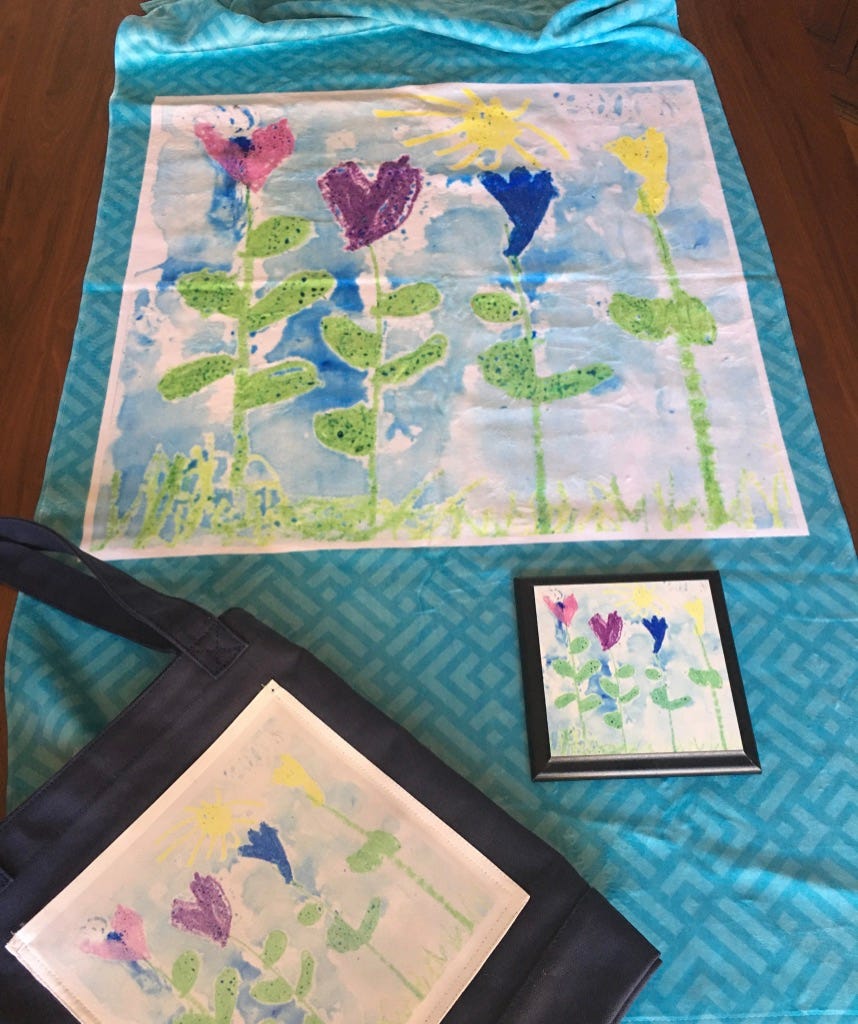
And, that is all I have! Talk to you next week.
🦋💙 tish
🌀🔵🔷🦋💙
… it is important that awake people be awake,
or a breaking line may discourage them back to sleep;
the signals we give — yes or no, or maybe —
should be clear: the darkness around us is deep.
— William Stafford, “A Ritual to Read to Each Other”





